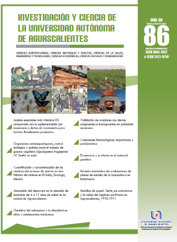Validation of sentences with congruent and incongruent closures for the Mexican population
DOI:
https://doi.org/10.33064/iycuaa2022863534Keywords:
cloze probability, N400 component, semantic congruity, semantic incongruity, Spanish sentences, Mexican populationAbstract
The aim was to generate and validate semantically congruent and incongruent sentences, all syntactically correct, for the Mexican population, that can be used in studies of the effect of context on lexical processing, in neurophysiological tests for patients with cognitive impairments, in monitoring patients with language problems and in the research of cognitive processes. We homogenized its length to four words to increase the control of variables and to present the largest number of trials in the shortest possible time, reducing the participants’ fatigue. The result is a set of sentences with several closing words, their respective Tulving-and-Gold I, cloze probability, and ‘sense level’ values, so that the user of these sentences can choose among closures with different values. These sentences evoked the N400 centro-parietal electrophysiological component with a maximum peak of -4.7 µV, and latency at 401 ms on average.
Downloads
References
• Aborn, M., Rubenstein, H., & Sterling, T. D. (1959). Sources of contextual constraint upon words in sentences. Journal of Experimental Psychology, 57(3), 171-180. doi:10.1037/h0040521
• Arcuri, S. M., Rabe-Hesketh, S., Morris, R. G., & McGuire, P. K. (2001). Regional variation of cloze probabilities for sentence contexts. Behavior Research Methods, Instruments, & Computers, 33(1), 80-90. doi:10.3758/bf03195350
• Bloom, P. A., & Fischler, I. (1980). Completion norms for 329 sentence contexts. Memory & Cognition, 8(6), 631-642. doi:10.3758/bf03213783
• Fischler, I., & Bloom, P. A. (1979). Automatic and attentional processes in the effects of sentence contexts on word recognition. Journal of Verbal Learning and Verbal Behavior, 18(1), 1-20. doi:10.1016/s0022-5371(79)90534-6
• Gironell, A., Crusat, M., Rigau, E., García-Nonell, C., Velo, E., García-Sánchez, C., & Kulisevsky, J. (2003). Validación de la traducción a los idiomas catalán y castellano del potencial evocado cognitivo N400. Neurología, 18(6), 310-317. Recuperado de https://medes.com/publication/9892
• Idiazábal, M. A., Espadaler, J. M., & Vila, J. (2001). Procesamiento semántico en el trastorno por déficit de atención con hiperactividad. Anuario de Psicología, 32(4), 47-64. Recuperado de https://revistes.ub.edu/index.php/Anuario-psicologia/article/view/8794/11030
• Kimble, M., Batterink, L., Marks, E., Ross, C., & Fleming, K. (2012). Negative expectancies in posttraumatic stress disorder: Neurophysiological (N400) and behavioral evidence. Journal of Psychiatric Research, 46(7), 849-855. doi:10.1016/j.jpsychires.2012.03.023
• Kutas, M., & Hillyard, S. A. (1980). Reading senseless sentences: Brain potentials reflect semantic incongruity. Science, 207, 203-205. doi:10.1126/science.7350657
• Kutas, M., & Hillyard, S. A. (1984). Brain potentials during reading reflect word expectancy and semantic association. Nature, 307, 161-163. doi:10.1038/307161a0
• Lepock, J. R., Ahmed, S., Mizrahi, R., Gerritsen, C. J., Maheandiran, M., Bagby, R. M., Korostil, M., & Kiang, M. (2019). N400 event‐related brain potential as an index of real‐world and neurocognitive function in patients at clinical high risk for schizophrenia. Early Intervention in Psychiatry, 15(1), 68-75. doi:10.1111/eip.12911
• Lopez-Calderon, J., & Luck, S. J. (2014). ERPLAB: An open-source toolbox for the analysis of event-related potentials. Frontiers in Human Neuroscience, 8, 1-14. doi:10.3389/fnhum.2014.00213
• Marchand, Y., D’Arcy, R. C., & Connolly, J. F. (2002). Linking neurophysiological and neuropsychological measures for aphasia assessment. Clinical Neurophysiology, 113(11), 1715-1722. doi:10.1016/s1388-2457(02)00224-9
• McDonald, S. A., & Tamariz, M. (2002). Completion norms for 112 Spanish sentences. Behavior Research Methods, Instruments, & Computers, 34(1), 128-137. doi:10.3758/bf03195431
• Olichney, J. M., Morris, S. K., Ochoa, C., Salmon, D. P., Thal, L. J., Kutas, M., Iragui, V. J. (2002). Abnormal verbal event related potentials in mild cognitive impairment and incipient Alzheimer’s disease. Journal of Neurology, Neurosurgery & Psychiatry, 73(4), 377-384. doi:10.1136/jnnp.73.4.377
• Ralph, Y. K., Schneider, J. M., Abel, A. D., & Maguire, M. J. (2020). Using the N400 event-related potential to study word learning from context in children from low- and higher-socioeconomic status homes. Journal of Experimental Child Psychology, 191, 1-15. doi:10.1016/j.jecp.2019.104758
• Rodríguez-Camacho, M., Prieto-Corona, B., Bravo, M., Marosi, E., Bernal, J., & Yáñez, G. (2011). Normas de terminación para la palabra final de oraciones en español para niños mexicanos. Avances en Psicología Latinoamericana, 29(2), 258-275. Descargado de https://www.redalyc.org/articulo.oa?id=79922588007
• Rossi, N. F., Fernandes, C., Moreira, C. S., Giacheti, C. M., Sichieri, B. B., Pinheiro, A. P., & Sampaio, A. (2020). Sentence contexts and cloze probabilities for Brazilian Portuguese children and adolescents. PLOS ONE, 15(7), 1-17. doi:10.1371/journal.pone.0236388
• Schuberth, R. E., & Eimas, P. D. (1977). Effects of context on the classification of words and nonwords. Journal of Experimental Psychology: Human Perception and Performance, 3(1), 27-36. doi:10.1037/0096-1523.3.1.27
• Szewczyk, J. M., & Schriefers, H. (2017). The N400 as an index of lexical preactivation and its implications for prediction in language comprehension. Language, Cognition and Neuroscience, 33(6), 665-686. doi:10.1080/23273798.2017.1401101
• Taylor, W. L. (1953). “Cloze Procedure”: A new tool for measuring readability. Journalism Quarterly, 30(4), 415-433. doi:10.1177/107769905303000401
• Taylor, W. L. (1957). “Cloze” readability scores as indices of individual differences in comprehension and aptitude. Journal of Applied Psychology, 41(1), 19-26. doi:10.1037/h0040591
• Tulving, E., & Gold, C. (1963). Stimulus information and contextual information as determinants of tachistoscopic recognition of words. Journal of Experimental Psychology, 66(4), 319-327. doi:10.1037/h0048802
• West, R. F., & Stanovich, K. E. (1978). Automatic contextual facilitation in readers of three ages. Child Development, 49(3), 717-727. doi:10.2307/1128240
Downloads
Published
How to Cite
License
Copyright (c) 2022 María Guadalupe Yáñez-Ramos, Daniel Zarabozo, Julio Varela

This work is licensed under a Creative Commons Attribution-NonCommercial-ShareAlike 4.0 International License.
Las obras publicadas en versión electrónica de la revista están bajo la licencia Creative Commons Atribución-NoComercial-CompartirIgual 4.0 Internacional (CC BY-NC-SA 4.0)









